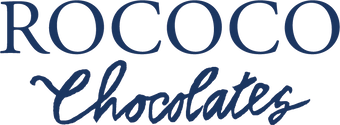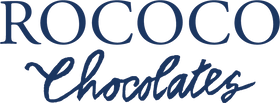The Rich History of Fine Chocolate: From Ancient Beginnings to Modern Craftsmanship
Chocolate, one of the world's most beloved treats, has a rich history that dates back thousands of years. From its ancient origins to the sophisticated craft and artisan chocolates we enjoy today, the journey of chocolate is a fascinating tale of cultural evolution, innovation, and passion.
Ancient Origins: The Birth of Chocolate
The story of chocolate begins with the ancient civilisations of Mesoamerica, where the cacao tree (Theobroma cacao) was first cultivated. The Olmecs, one of the earliest known Mesoamerican cultures, are believed to have been the first to use cacao, around 1500 BCE. They consumed a bitter beverage made from ground cacao beans mixed with water, spices, and other ingredients.
The Maya and Aztecs later adopted and refined this practice. For the Maya, cacao was a symbol of abundance and was often used in religious rituals and ceremonies. They enjoyed a frothy, spiced chocolate drink called "xocoatl," which was considered a sacred beverage. The Aztecs also revered cacao, using it as currency and as a drink reserved for nobility and warriors. The Aztec emperor Montezuma II was famously known for consuming large quantities of the chocolate drink daily.
The Introduction of Chocolate to Europe
Chocolate made its way to Europe in the 16th century, thanks to Spanish explorers who brought cacao beans back from their expeditions to the New World. Initially, chocolate was consumed as a beverage, similar to the Mesoamerican traditions, but Europeans added sugar, vanilla, and other spices to suit their tastes.
By the 17th century, chocolate had become a fashionable drink among European aristocracy. Chocolate houses, similar to modern-day cafes, began to appear in cities like London, Paris, and Madrid, where patrons could enjoy this luxurious treat.
Industrialisation and Mass Production
The 19th century brought significant advancements in chocolate production, transforming it from an artisanal product to a mass-produced commodity. In 1828, Dutch chemist Coenraad van Houten discovered a way to treat cocoa beans with alkaline salts to form a cocoa powder easier to mix with water which became knows as "Dutch processing", and is the basis for "Dutch cocoa".
In 1847, British chocolatier J.S. Fry & Sons created the first solid moulded chocolate bar by mixing cocoa butter, cocoa powder, and sugar. This innovation paved the way for other iconic chocolate manufacturers, such as Cadbury and Nestlé, to develop their own chocolate bars and confections.
In 2024, it's estimated the size of the chocolate and confectionery market is worth £7 billion in the UK alone, most of it through sales of iconic bars and chocolate confectionery from British brands like Cadbury.
Popular flavours are often made of milk chocolate, and novelty inclusions and flavours include popping candy, gummy sweets, and other inventive combinations.
The Bean-to-Bar Movement
The late 20th century saw a resurgence of interest in high-quality, artisanal chocolate, leading to the birth of the bean-to-bar movement.
Pioneered by small-scale chocolate makers, this movement focuses on the entire chocolate-making process, from sourcing cacao beans to the final product. Bean-to-bar makers prioritise quality, transparency, and sustainability, often working directly with cacao farmers to ensure fair trade practices and exceptional cacao quality.
Craft vs. Artisan Chocolate
While the terms "craft" and "artisan" chocolate are often used interchangeably, there are subtle differences between the two.
-
Craft Chocolate: Craft chocolate makers are typically small-scale producers who oversee every step of the chocolate-making process, from bean selection to roasting, grinding, and tempering. They emphasise unique flavour profiles and often experiment with single-origin beans to highlight the distinct characteristics of different cacao varieties.
-
Artisan Chocolate: Artisan chocolate refers to chocolate that is handcrafted, often in small batches, by skilled chocolatiers. While artisan chocolatiers may not necessarily be involved in the entire bean-to-bar process, they focus on creating exquisite confections, truffles, and other treats using high-quality ingredients and traditional techniques.
The Academy of Chocolate and the Fine Chocolate Movement in the UK
In the UK, the fine chocolate movement has been significantly influenced by the Academy of Chocolate, established in 2005. The Academy aims to promote a greater awareness of the complexities of fine chocolate, focusing on quality, provenance, and the craftsmanship behind chocolate making. They host annual awards that recognise excellence in the industry, providing a platform for both established and emerging chocolatiers to showcase their work.
The UK has seen a burgeoning interest in fine chocolate, with an increasing number of bean-to-bar makers and artisan chocolatiers gaining recognition. This movement is characterised by a commitment to ethical sourcing, transparency, and a deep appreciation for the art of chocolate making.
Comparing the UK and France: A Tale of Two Chocolate Cultures
France has a long-standing tradition of fine chocolate, with a reputation for its sophisticated and elegant approach to chocolate making. French chocolatiers, such as La Maison du Chocolat and Pierre Hermé, have set high standards in the industry, emphasising innovation, exquisite presentation, and the use of high-quality ingredients.
The French chocolate scene is deeply rooted in its culinary culture, with a focus on refinement and luxury. French chocolatiers are often celebrated for their creativity in flavour combinations and their meticulous attention to detail.
In comparison, the UK’s fine chocolate movement is more recent but has grown rapidly, driven by a new generation of passionate chocolate makers. While both countries prioritise quality and craftsmanship, the UK scene is marked by a strong emphasis on ethical sourcing and sustainability, often with a more experimental approach to flavours and techniques.
The Future of Fine Chocolate
Today, the fine chocolate industry continues to evolve, with a growing emphasis on sustainability, ethical sourcing, and innovative flavor combinations. Consumers are becoming more educated about the origins and production methods of their chocolate, leading to increased demand for high-quality, transparently sourced products.
As we celebrate the rich history of chocolate, we also look forward to the future, where passion, craftsmanship, and innovation will continue to shape the world of fine chocolate.





